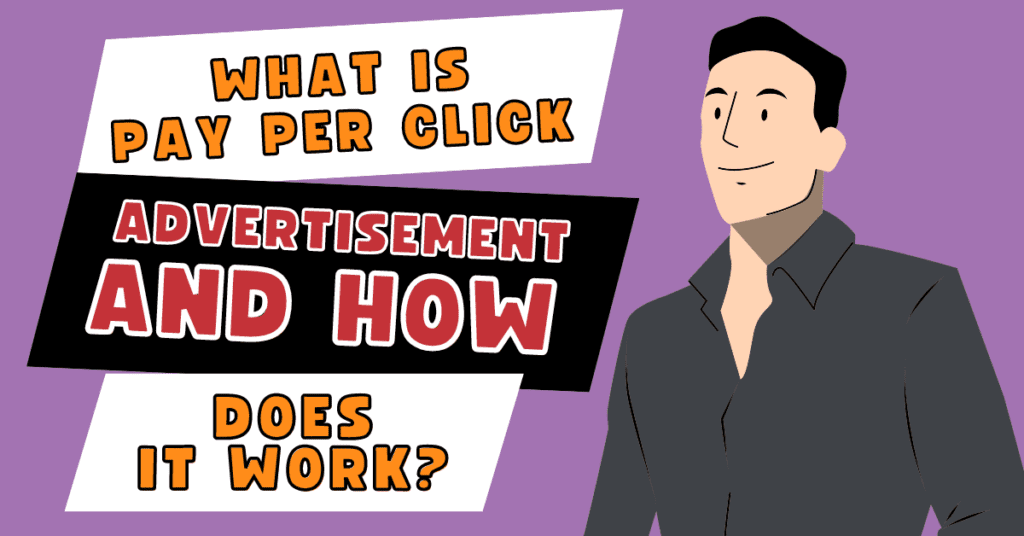

Pay Per Click (PPC) is an online advertising model where advertisers have to pay a specific amount of fee each time whenever their ads are clicked. It’s a way of buying reach to your site rather than trying to earn those visits organically. PPC advertising is commonly related with search engines like Google and Bing, where advertisers bid on keyword for placement of their ads in the sponsored links section of search engine results pages (SERPs) when someone searches for a keyword related to their business or products.
Overall, PPC advertising is a powerful tool in digital marketing that can gather targeted traffic to websites, increase brand awareness, and generate leads or sales, depending on the advertiser’s goals.
PPC (Pay-Per-Click) advertising is very essential and important for several reasons in digital marketing:
1. Targeted Reach: PPC allows advertisers to target their ads to specific demographics, locations, interests, and behaviours. This targeting features ensures that ads are shown to the most relevant audience for generating engagement and conversion.
2. Instant Visibility: As organic search engine optimization (SEO), which can take time to see results, PPC provides instant visibility. Advertisers can have their ads displayed continuously on search engine results pages (SERPs) or social media platforms as their campaigns are launched which helps to driving immediate traffic to their websites.
3. Measurable Results: PPC platforms offer detailed analytics and reporting tools that allow advertisers to track the performance of their campaigns at same time. Metrics such as clicks, impressions, conversions, and return on investment (ROI) can be easily monitored by providing necessity insights.
4. Control Over Budget and Spending: PPC campaigns are highly customizable, allowing advertisers to set daily or monthly budgets and adjust bids based on performance. This level of control ensures that advertisers can effectively manage their advertising spend and maximize their ROI.
5. Flexibility and Scalability: PPC advertising offers flexibility in terms of ad creatives, targeting options, and campaign settings. Advertisers can quickly test different ad variations, target audiences, and keywords to optimize their campaigns for better results. Overall, PPC campaigns can be easily grow up or down depending on business objectives and budget pattern.
6. Brand Exposure and Awareness: PPC ads appearing at the top of search engine results or within social media feeds that increase brand visibility and awareness. Even if users don’t click on the ads, they are exposed to the brand, which can have a positive impact on brand remembering and recognition.
7. Complements Other Marketing Channels: PPC advertising works similarly with other digital marketing channels such as SEO, content marketing, and social media marketing. Adding PPC with these channels can boost overall marketing efforts and generate better results.
Overall, PPC advertising is a important component of a comprehensive digital marketing strategy, offering unlimited targeting capabilities, immediate results, and measurable ROI. By using the power of PPC, businesses can effectively reach their target audience, generate traffic to their websites, and achieve their marketing objectives.
In short, the PPC (Pay-Per-Click) model is an online advertising technique where advertisers pay specific amount of fee each time their ad is clicked. It’s commonly used on search engines like Google and Bing, where advertisers bid for ad placement in search engine results. When a user clicks on the ad, the advertiser pays a fixed fee, making it a cost-effective way to generate targeted traffic to websites. PPC offers advantages such as targeted reach, instant visibility, measurable results, and control over budget and spending.
PPC (Pay-Per-Click) advertising operates on a simple yet powerful platform, providing search engines and other platforms to connect advertisers with potential customers. At its base, PPC advertising works through an auction-based system where advertisers bid on a specific keyword relevant to their products or services. When users conduct searches using these keywords, the search engine displays sponsored ads alongside organic search results. The placement of these ads is determined by a combination of bid amount and ad quality, measured by factors such as click-through rate (CTR) and relevance. When a user clicks on an ad, the advertiser is charged a fee which is termed as “pay-per-click.” Advertisers have control over their bids, budgets, and targeting options, allowing them to create their campaigns to specific audiences and objectives. Through ongoing monitoring and optimization, advertisers can refine their PPC campaigns to improve performance, drive targeted traffic to their websites, and to achieve their marketing goals.
PPC (Pay-Per-Click) advertising offers several benefits for businesses looking to increase their online visibility, enhance targeted traffic to their websites, and achieve their marketing objectives. Some of the key benefits of PPC advertising include:
1. Instant Visibility: PPC allows advertisers to quickly place their ads at the top of search engine results pages (SERPs) or on other related websites, ensuring immediate visibility to potential customers.
2. Targeted Reach: PPC platforms offer advanced targeting options that allow advertisers to reach specific demographics, locations, interests, and behaviours, ensuring that ads are shown to the most relevant audience.
3. Measurable Results: PPC campaigns provide detailed analytics and reporting tools that allow advertisers to track key performance metrics such as clicks, impressions, conversions, and return on investment (ROI), providing valuable insights into campaign effectiveness.
4. Control Over Budget and Spending: PPC advertising offers advertisers full control over their budgets, allowing them to set daily or monthly spending limits and adjust bids based on performance, ensuring efficient allocation of advertising dollars.
5. Flexibility and Scalability: PPC campaigns can be easily customized and grow up or down to immediate changing business objectives, seasonal trends, or budget constraints, providing flexibility and agility in advertising strategy.
6. Brand Exposure and Awareness: PPC ads appearing prominently in search results or on social media platforms increase brand visibility and awareness, even if users don’t click on the ads, contributing to brand remembering and recognition.
7. High Return on Investment (ROI): With proper optimization and targeting, PPC advertising can generate a high ROI by generating qualified traffic to websites, generating leads or sales, and maximizing the value of advertising spend.
Overall, PPC advertising is a powerful tool in digital marketing that offers instant visibility, targeted reach, measurable results, and control over budget and spending, making it an essential component in marketing strategy for businesses of all sizes.
In PPC advertising, several common mistakes can undermine the effectiveness of campaigns and waste advertising budget. Some of these mistakes include:
By avoiding these common mistakes and implementing best practices, advertisers can improve the effectiveness of their PPC campaigns and achieve better results in terms of traffic, conversions, and ROI.
Certainly! Here are the best practices for successful PPC campaigns and its complete optimization, with explanations for each subtopic:
By following these best practices, advertisers can optimize their PPC campaigns for maximum performance, driving targeted traffic to their websites and achieving their marketing objectives effectively.
In conclusion, PPC (Pay-Per-Click) advertising is a dynamic and powerful tool in the digital marketing world, it offering advertisers a highly targeted and measurable way to reach their audience in online medium. Through a combination of strategic keyword selection, merging ad copywriting, and effective landing page optimization, PPC campaigns can drive immediate traffic to websites, generate leads, and increase sales. By participating in PPC auctions and bidding for ad placement on search engine results pages (SERPs) or other platforms, advertisers can ensure their ads are displayed to users actively searching for relevant products or services. With careful monitoring, analysis, and optimization of campaign performance, advertisers can continuously refine their PPC strategies to maximize ROI and achieve their marketing goals. In short, PPC advertising provide businesses to connect with their target audience, increase brand visibility, and drive tangible results in the evolving digital marketing world.
Related Articles
Pay per click (PPC) advertising is a digital marketing model where advertisers pay a fee each time their ad is clicked. It’s a way of buying visits to your site rather than attempting to “earn” those visits organically. Search engine advertising is one of the most popular forms of PPC, where advertisers bid for ad placement in a search engine’s sponsored links when someone searches on a keyword related to their business offering.
PPC advertising works through a bidding system, where advertisers bid on keywords relevant to their target audience. When users search for those keywords, the search engine displays sponsored ads at the top or bottom of the search results page. Ad placement is determined by factors such as bid amount, ad quality, and relevance. When a user clicks on the ad, the advertiser is charged the bid amount, hence the term “pay per click.”
The key components of a PPC campaign include:
Some benefits of PPC advertising include:
Some popular PPC advertising platforms include: